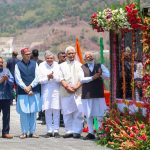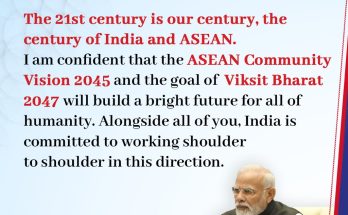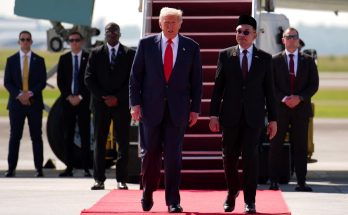By Amb. Indra Mani Pandey
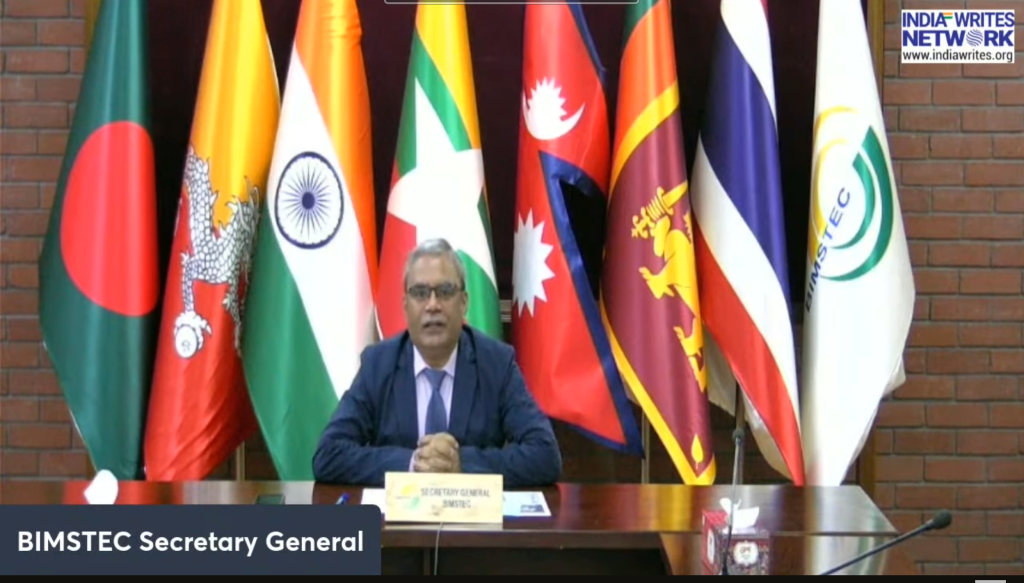 The 6th BIMSTEC summit in Bangkok on April 4, 2025, will be a defining moment in the evolution of the seven-nation grouping. Let me outline the key outcomes of the summit. Our leaders will adopt a declaration. They will also adopt the BIMSTEC Bangkok Vision 2030. This is the first time that BIMSTEC, comprising five countries of South Asia and two countries of Southeast Asia. There will be signing of an agreement on maritime transport cooperation in the presence of the leaders of BIMSTEC countries.
The 6th BIMSTEC summit in Bangkok on April 4, 2025, will be a defining moment in the evolution of the seven-nation grouping. Let me outline the key outcomes of the summit. Our leaders will adopt a declaration. They will also adopt the BIMSTEC Bangkok Vision 2030. This is the first time that BIMSTEC, comprising five countries of South Asia and two countries of Southeast Asia. There will be signing of an agreement on maritime transport cooperation in the presence of the leaders of BIMSTEC countries.
Many other MoUs will be signed for partnerships between BIMSTEC Secretariat and its external partners. The leaders will consider the report of the Eminent Persons Group. The EPG worked last year and prepared its report. The leaders will approve the rules of procedure. It will be an important step, coming as it does into force of the charter in May 2024. Two important new ministerial mechanisms will be launched. The mechanism of the meeting of home ministers to deal with internal security issues, and a separate meeting of health ministers.
In his address, Mr Manish Chand (CEO, Centre for Global India Insights) spoke about uncertainties in the global politics, which are also impacting on global trade, and the impact that it has on multilateral institutions. In this context, the importance of South-South Cooperation cannot be overstated. The best way to engage in South-South Cooperation, in my view, is through minilaterals and regional organizations like BIMSTEC.
It’s important to underline that BIMSTEC continues to enjoy full political support from all its members. Since taking over as Secretary-General, I have had the privilege of visiting the capitals of the member state and meeting with the leaders of our member states. All of them are fully committed to BIMSTEC and would like BIMSTEC to emerge as a dynamic regional organization.
Why BIMSTEC Matters
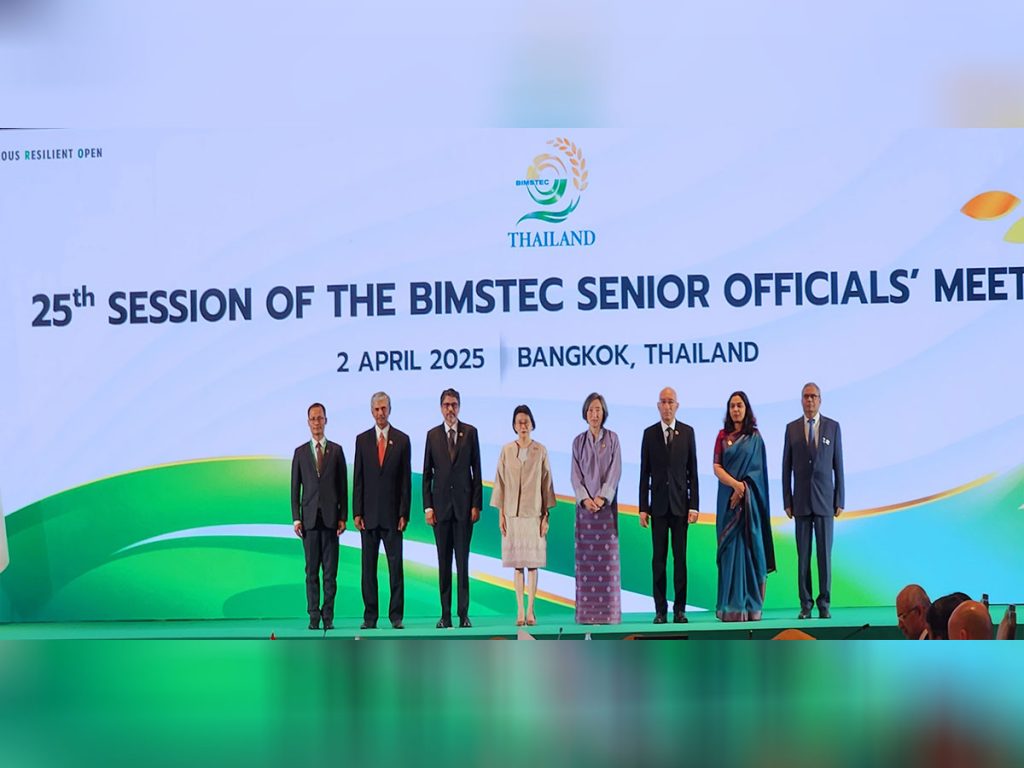
If you look at the total population of our member states, if you look at the size of our economies, if you look at the external trade that we have with the world, the Bay of Bengal region, with its seven countries, emerges as an important strategically located region. What are the fundamental strengths of BIMSTEC? One, we now have our own charter. We have our core and sectoral mechanisms in place, which are functioning well. We have a vast agenda, comprising 15 sectors and sub-sectors of cooperation. We have created a unique system of participation of all the member states in regional cooperation, where each member state has been given responsibility for a sector or a couple of sectors, depending on their willingness to take the responsibility. For example, Bangladesh leads very important sectors like trade, investment, development, and blue economy. Bhutan oversees environment and climate change sector as well as mountain economy. India leads in sectors like security, disaster management, and energy. Myanmar leads agriculture and food security, fisheries, and livestock. Sri Lanka leads, uh, science, technology and innovation, health, and human resource development. Nepal leads very important people-to-people contact sectors, including tourism, cultural cooperation, visa matters, people-to-people contact platforms like think tanks. Finally, Thailand leads the connectivity sector.
What will be our focus post-summit? I think the secretariat and member states are likely to focus on the implementation of the summit declaration, the Bangkok Vision 2030, ministerial statements by the sectoral ministerial mechanisms, and very importantly, the Eminent Persons Group report. Our attempt will be to make sure that there are no prolonged delays in implementation of the decisions, action plans and summit declarations – we will ensure that they are implemented as directed by our leaders. We should also endeavor to ensure that regular and frequent meetings of various core and sectoral mechanisms are held. This has been a major challenge so far.
In this context, I would like to underline the importance of the EPG report. As I mentioned earlier, the Eminent Persons Group was constituted in 2023. They held six meetings in 2024, spread over eight months. They met in the secretariat for 15 working days, had consultations with numerous stakeholders, and then prepared their report which contains many significant recommendations. And unlike what happens with such reports, in the BIMSTEC context, the member states have already started the process of implementation of the report by identifying those recommendations which can be implemented immediately. There are some recommendations, which will require more discussion among the member states. We hope that once we have been able to implement the key recommendations of the EPG report, we will be able to address key issues such as delays in implementation of the decisions by our leaders and the lack of regular and frequent meetings of our core and sectoral mechanisms.
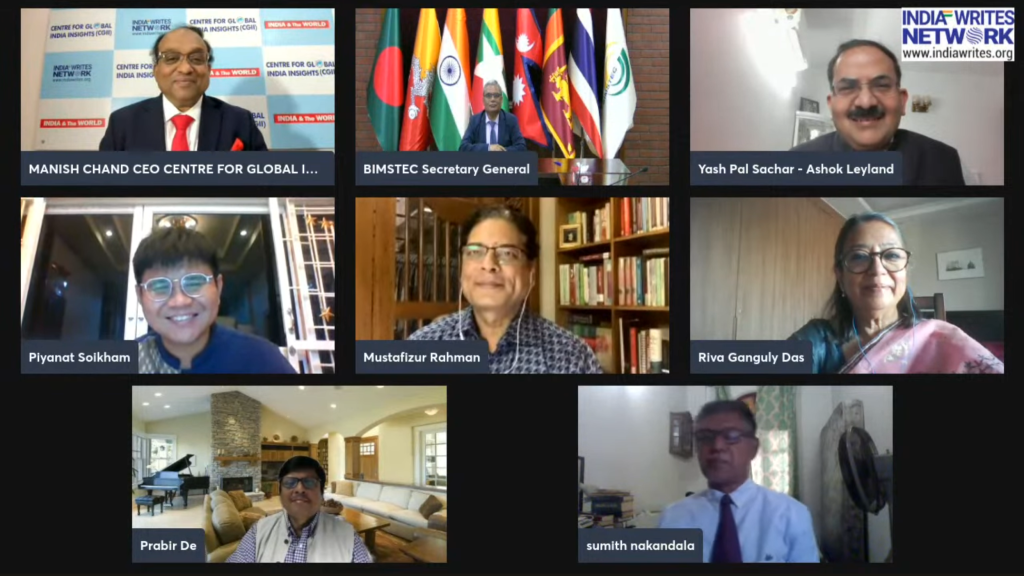
We have already introduced a system of seeking the approval of our ministers and senior officials through circulation of some important matters. We have also recently introduced an annual calendar of meetings and events. I think this will enable member states to prepare in advance for various meetings and events which they are required to host. In the secretariat, within our existing resources, we have been able to create three units – the implementation support unit, which will work very closely with the member states for smooth implementation of their decisions; the policy support unit, which will prepare background briefs and papers for various meetings in different sectors so that our member states are well informed and they have some substantive proposals before them for their decision. We have also created a project management unit in the secretariat so that in future, working with our external partners, we’ll have the capacity to undertake implementation of the projects.
Partnering with external organizations
We have also been exploring partnerships with relevant UN organizations, international organizations, and regional organizations. We will soon be signing a MOU with Indian Ocean Rim Association (IORA). We have also been trying to reach out to the media, to think tanks, academia, and students in order to better inform them about BIMSTEC and also benefit from their perspectives about BIMSTEC.
Looking ahead, what more can we do? I’m quite sure that with the reforms that we are going to undertake in BIMSTEC with the revitalization process which is underway, with the core strength of BIMSTEC where we focus on technical and economic cooperation on the ground rather than getting embroiled into divisive political issues, I think with all these core strengths of BIMSTEC, we are poised to emerge as a very vibrant and dynamic regional organization. If we need more regional cooperation, we need BIMSTEC in our region, to work better as a regional organization. And that is where our member states are committed to making sure that BIMSTEC does fulfill its role in future.
BIMSTEC and SAARC
I’d just like to mention one point which I have mentioned in other context, that it is not fair to BIMSTEC, to look at BIMSTEC in the context of SAARC or any other organization because BIMSTEC has its own rationale, its own agenda, its own role, its own history, its own challenges and opportunities as a regional organization. We were born 27 years ago.
At that time, SAARC was fully functional and at the same time, the need was felt to have an organization which will focus on technical and economic cooperation, bringing together two members from South Asia and one from Southeast Asia. Later, Myanmar joined us and so did Nepal and Bhutan. So BIMSTEC has its own history, its own context and it should not be looked at within the context of SAARC, which has its own agenda, its own history, and its challenges to deal with. I would, therefore, appeal to all of you that, in your discourse, we look at BIMSTEC on its own, and not in the context of any other regional organizations.
(This is the edited version of remarks made by Amb. Indramani Pandey, BIMSTEC Secretary General, at the online conference titled, “Bolstering BIMSTEC: Mapping the Next Steps,” on March 28, 2025. The conference was organized by Centre for Global India Insights, a think tank focused on international affairs, and India and the World journal.)
Author Profile
- India Writes Network (www.indiawrites.org) is an emerging think tank and a media-publishing company focused on international affairs & the India Story. Centre for Global India Insights is the research arm of India Writes Network. To subscribe to India and the World, write to editor@indiawrites.org. A venture of TGII Media Private Limited, a leading media, publishing and consultancy company, IWN has carved a niche for balanced and exhaustive reporting and analysis of international affairs. Eminent personalities, politicians, diplomats, authors, strategy gurus and news-makers have contributed to India Writes Network, as also “India and the World,” a magazine focused on global affairs.
Latest entries
 DiplomacyOctober 4, 2025UNGA Resolution 2758 Must Not Be Distorted, One-China Principle Brooks No Challenge
DiplomacyOctober 4, 2025UNGA Resolution 2758 Must Not Be Distorted, One-China Principle Brooks No Challenge India and the WorldJuly 26, 2025MPs, diplomats laud Operation Sindoor, call for national unity to combat Pakistan-sponsored terror
India and the WorldJuly 26, 2025MPs, diplomats laud Operation Sindoor, call for national unity to combat Pakistan-sponsored terror India and the WorldJuly 25, 2025When Fire Ends, Diplomacy Begins
India and the WorldJuly 25, 2025When Fire Ends, Diplomacy Begins India and the WorldJuly 16, 2025Operation Sindoor and its Aftermath: India’s Successful Diplomatic Outreach
India and the WorldJuly 16, 2025Operation Sindoor and its Aftermath: India’s Successful Diplomatic Outreach




